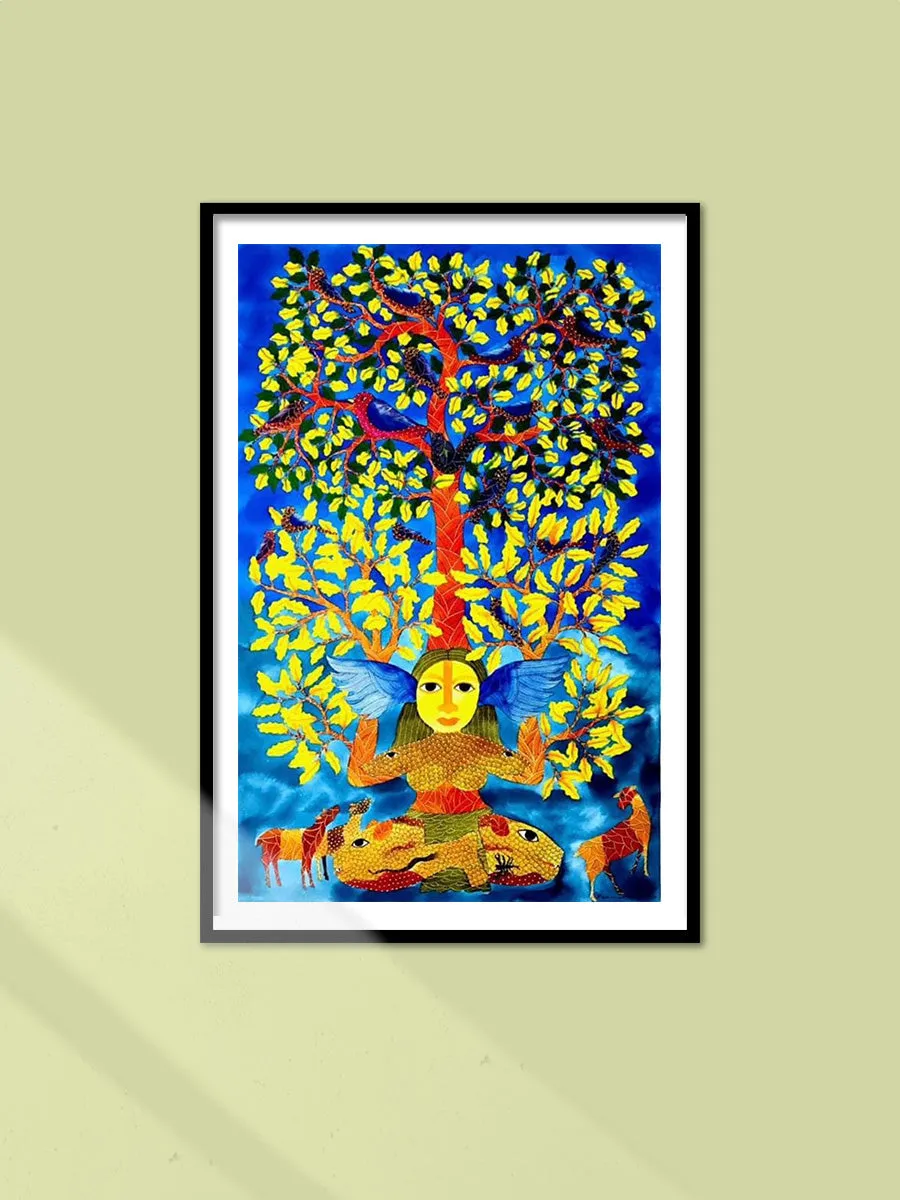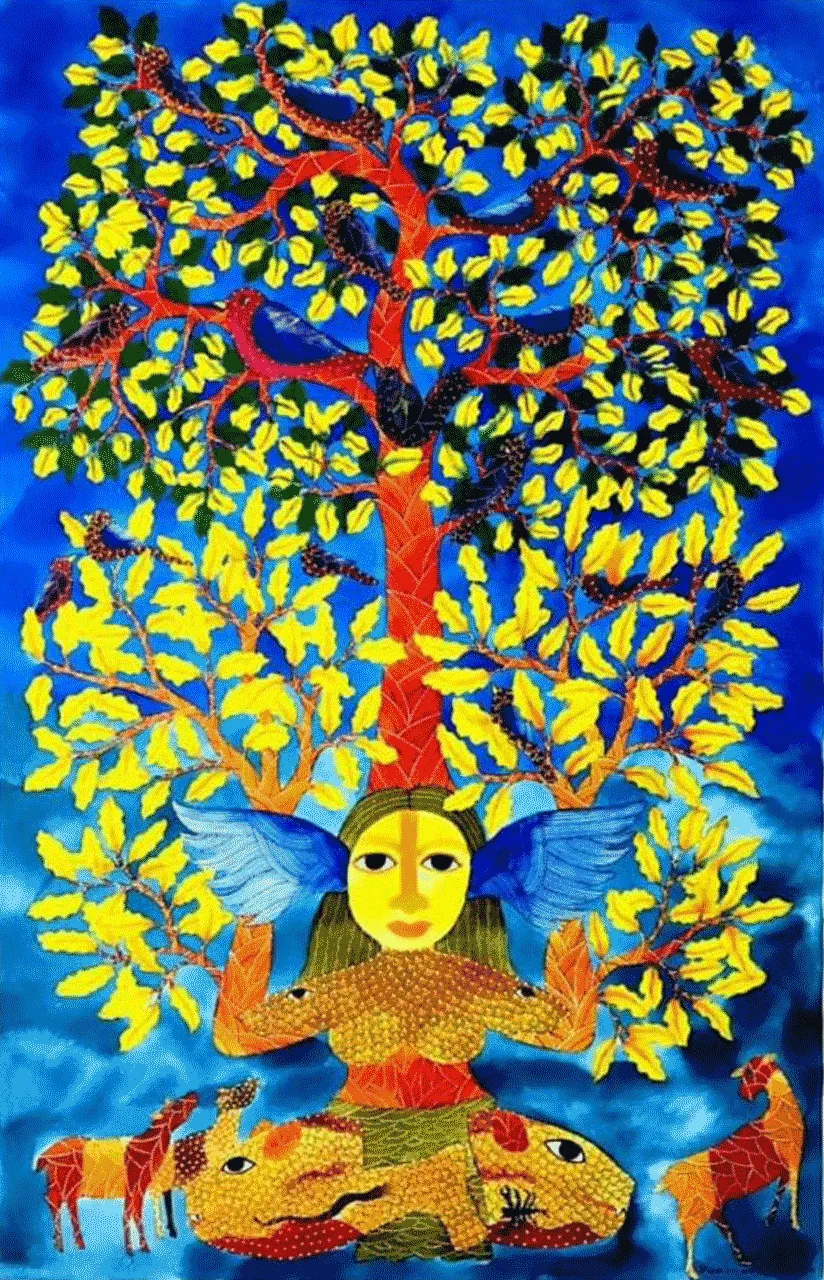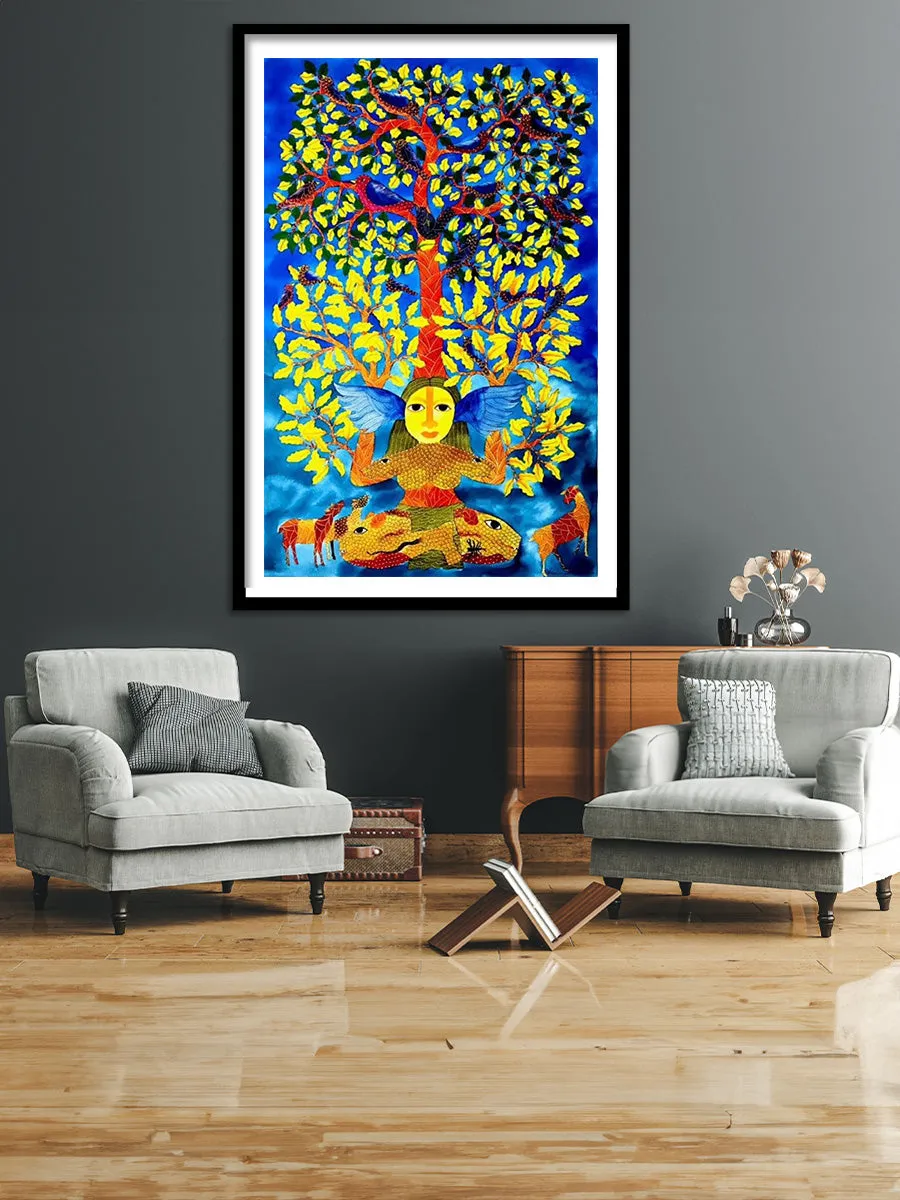In the mystical realm of a Gond painting by Venkat Shyam, the viewer is transported into a world where the essence of nature converges in the form of Van Devi, the goddess of the forest. Against a surreal backdrop of deep blue, a majestic tree rises, its branches ablaze in vibrant hues of red-orange, adorned with leaves of green and yellow, and bountiful fruits that seem to glow with their own inner light.
Beneath the canopy of this resplendent tree sits Van Devi herself, a mesmerizing embodiment of wildlife and the forest's guardian. Her form defies conventional boundaries—she possesses wings akin to birds, hands that transform into branches reaching towards the sky, a torso adorned with scales reminiscent of reptiles, and other parts of her body that morph into creatures like scorpions and various animals. This fluidity of form mirrors the ever-changing and interconnected nature of the ecosystem she represents.
Surrounding Van Devi are small forms of animals, such as deer, whose mosaic-like patterns echo those found on her own multifaceted body. These creatures, rendered in a vibrant array of colors, further emphasize the symbiotic relationship between the goddess and the wildlife she protects. Van Devi's gaze, with wide-open eyes and petal-like lips, meets the viewer directly, communicating a profound connection and a message of stewardship over the natural world.
This painting delves into the heart of Gond philosophy, where divinity intertwines with nature in a harmonious dance. Van Devi embodies the belief in the sanctity and interconnectedness of all living beings, transcending human limitations to encompass the entire ecosystem. Through Venkat Shyam's skillful portrayal, the painting not only captivates with its vivid imagery but also invites contemplation on humanity's role in preserving the delicate balance of the environment—a timeless message conveyed through the language of art.














